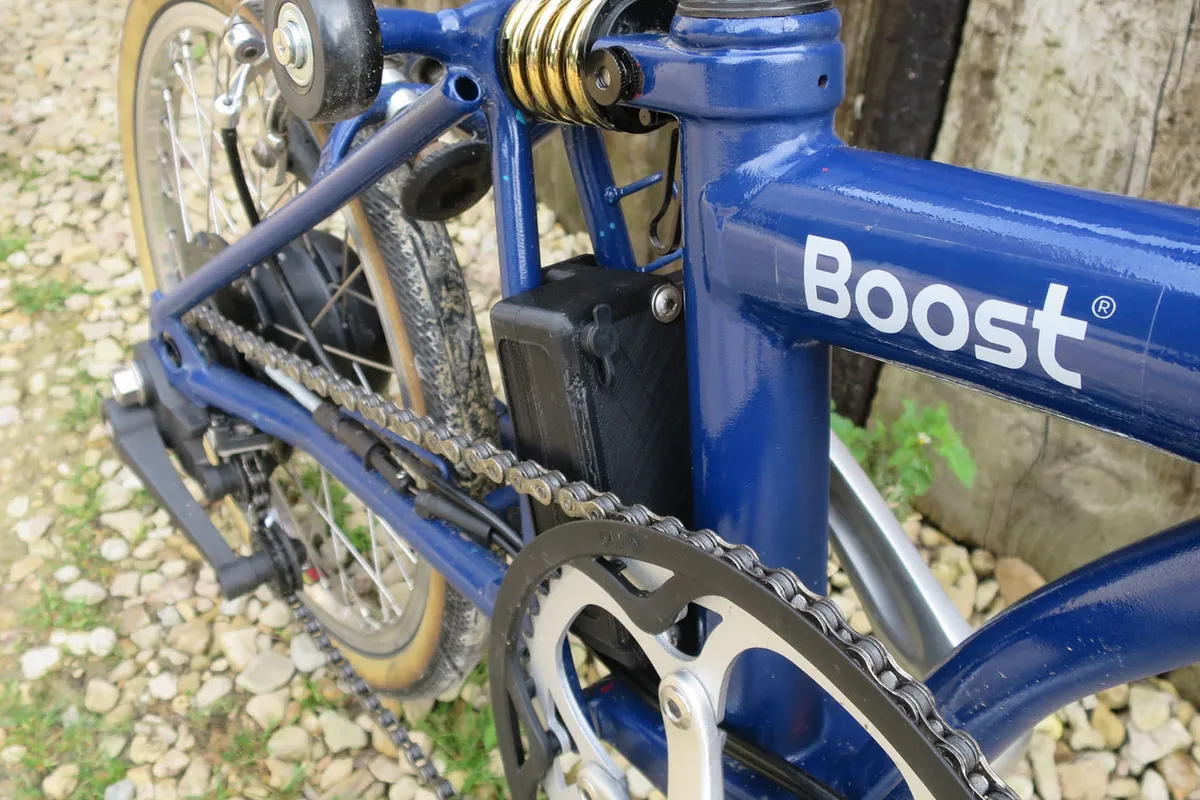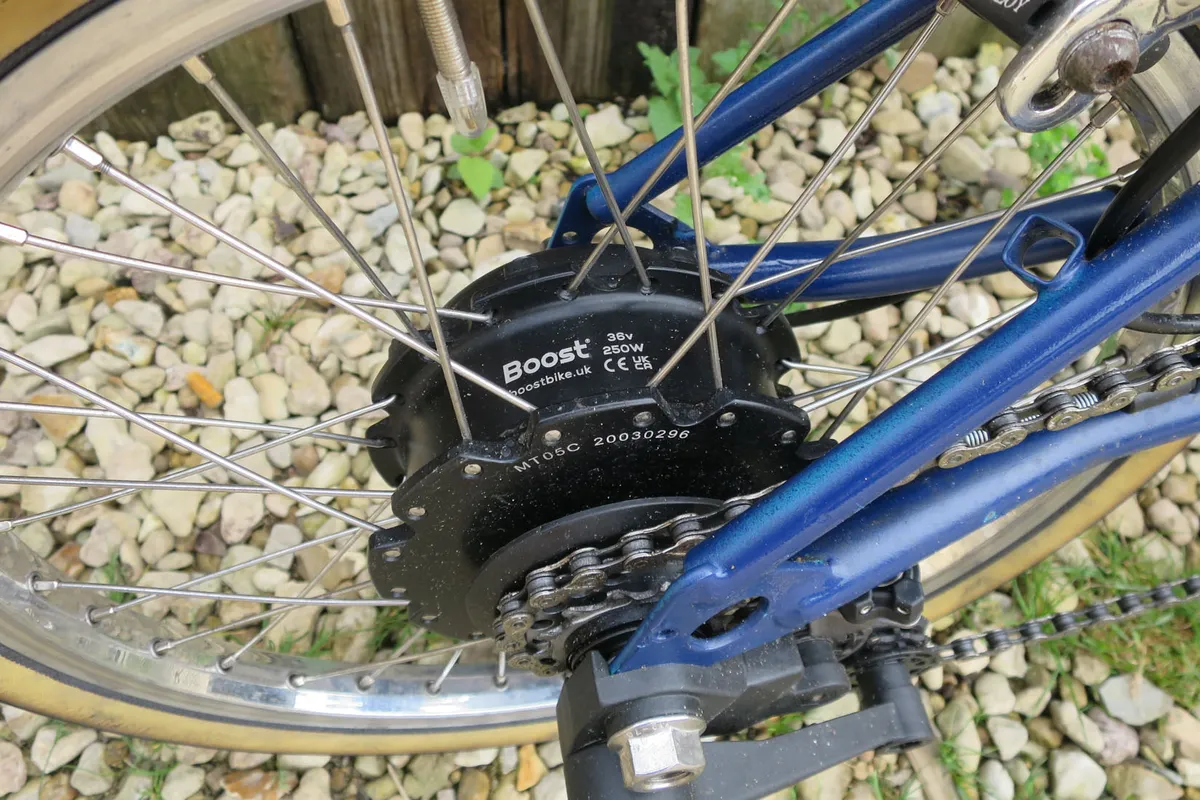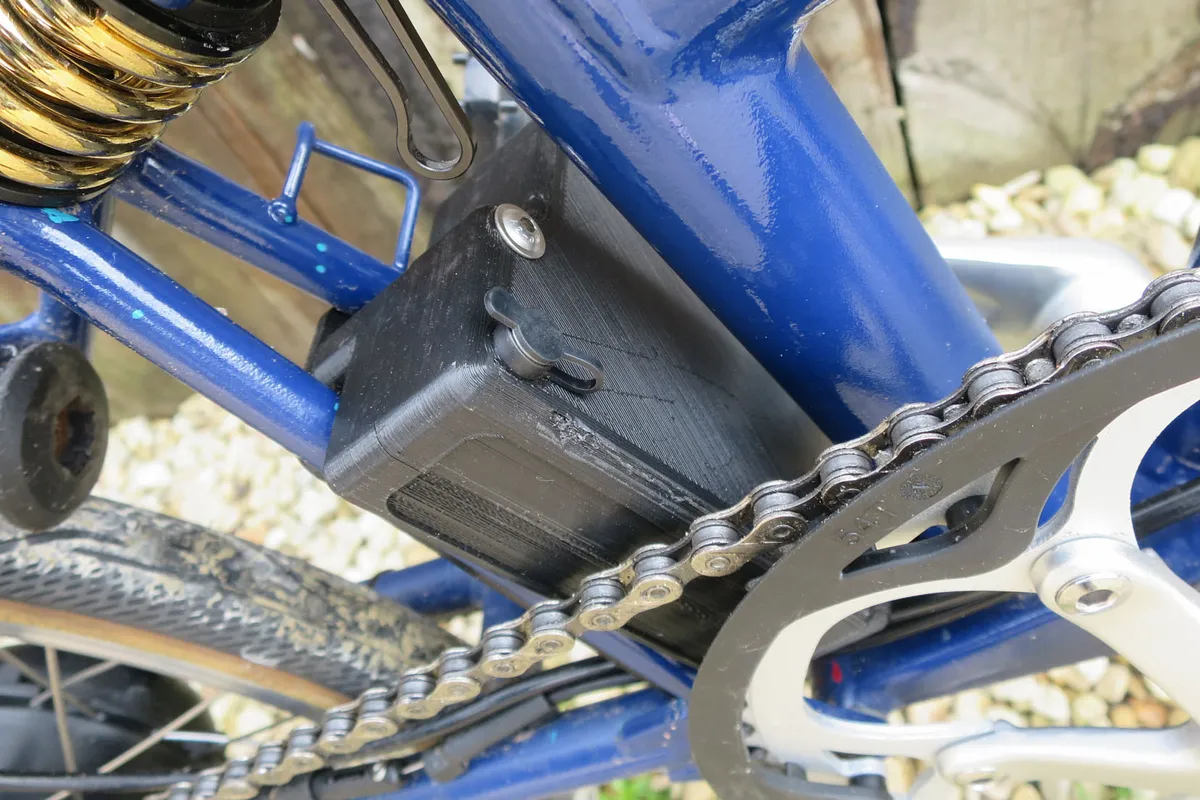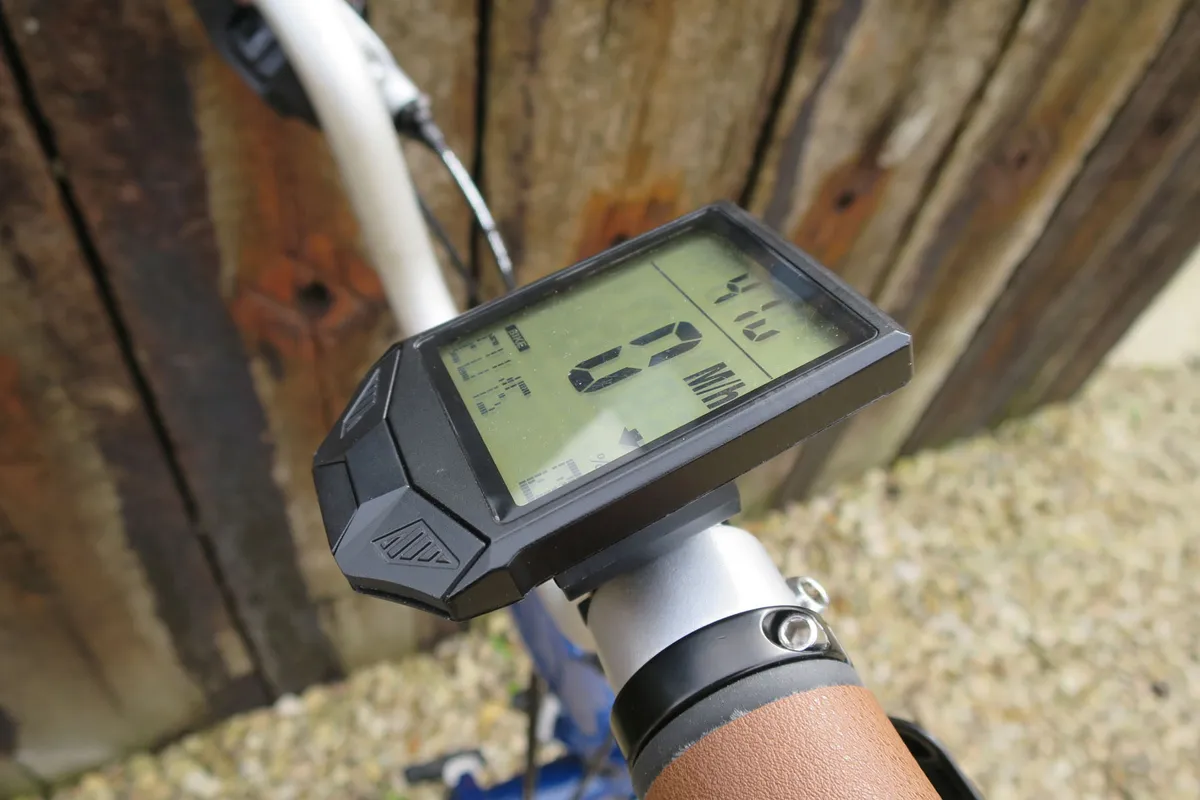Boost’s Brompton-specific version of its electric bike conversion system adds 2.5kg to the weight of a Brompton.
Until now, the options for an assisted Brompton were either the official Brompton Electric, Cytronex’s conversion or a Swytch conversion kit.
The electric Brompton and Cytronex conversion offer good range and proper assistance, but they add significant weight to a Brompton, and both use a motor housed in the front wheel.
When we tested these electric folding bikes we did find some issues with both traction and handling anomalies from driving the front wheel.
That’s why we were intrigued to try out Boost’s forthcoming option. It weighs significantly less than its more established rivals but it also shifts the drive to the rear wheel, which should maintain the Brompton’s weight balance and lightness in its steering.
F1 tech and a Brompton-specific design

Boost founder and inventor Nick Bailey explains to BikeRadar that the Boost for Brompton design, which is still in pre-production, has significant differences from the standard Boost electric bike conversion kit.
“I needed the Brompton kit to not compromise what is great about the Brompton, that’s a fuss-free, quick and compact fold married to low weight and light steering.
“It was obvious early on that it meant both a compact battery and a newly designed hub motor that’s narrower than our standard rear motor to accommodate the narrower Brompton rear dropouts.
“All the time I wanted to maintain the power output and feel of our standard Boost system,” says Bailey.

Keeping the weight to a minimum led Bailey to investigate the length of the average commute. He found that most Brompton users' mix-mode commutes are relatively short compared to the 50km range of the Brompton Electric and Cytronex.
In light of this, Bailey opted to pair the system's 250W motor with a compact battery with a claimed range of around 30 km, which is similar to the recently announced Swytch Go kit.
“If you want to extend the range then you can piggyback a range-extending battery like the standard Boost battery, which would add 50 kilometres to the range and fit onto a standard Brompton rear rack,” adds Bailey.
The Brompton-specific battery unit is a smart bit of packaging. The compact battery fits directly onto the Brompton’s swing arm occupying the space between the rear swing arm and seat tube. This doesn’t affect the swing arm movement or the fold at all.
The battery box is 3D-printed by the Silverstone-based Digital Manufacturing Centre (DMC), which creates plastic and metal parts for motorsport including Formula 1.
“Many in-season upgrades on F1 are drawn by computer-aided design by the teams and sent to the DMC for printing before being added straight onto cars,” Bailey explains.
The big brother of an Apple AirTag chip

The motorsport connection doesn’t end with the battery box. Bailey is an electronics engineer by trade and he designed the kit's control system using high-performance digital power switches more commonly found in car engine management.
This means the Boost’s electronics and computer can be fitted in a tiny 11mm-high recess in the casing. The main system processor is the big brother of the chip used in Apple AirTags, according to Bailey.
The battery casing is protected by a water-cut Permaglass panel, the same material used for the wear plank on the base of F1 cars for strength, wear resistance and lightness.

To attach the battery case to the bike and to keep the clamshell casing watertight, Nick is using titanium bolts. These promise lightness, corrosion resistance, and longevity.
The system is remarkably clean with just a single cable running from the battery to the hub, with no need for a wheel or cadence sensor as all the monitoring of the system is contained within the system.
Unlike the existing system, the Boost’s battery stays in place. Bailey thinks the majority of Brompton owners store their folding bikes inside, or even under their desks, so charging the battery in place is simple. Plus, it means a Brompton’s luggage space is still available for luggage and not a battery that has to be carried separately once you’ve folded your bike.
Ride impressions
Warren Rossiter, senior technical editor
I’ve had plenty of experience with the Brompton Electric and Cytronex Brompton, but on the short test ride I had on the Boost I came away more impressed by this compact system.
The rear hub motor is very well set up, with an eco mode, standard mode, and turbo mode all accessed from the optional wireless head unit or the Boost cycling app.
The power delivery is gradual with a power curve that feels seamless and works with your pedalling rather than overpowering your efforts, nor do you feel any lag in power.
In Turbo mode the Boost has plenty of punch and is great for short inclines.
With the electric motor at the rear, you get none of the traction issues of front-wheel drive as the power assistance is under you rather than out front. This also keeps the light steering feel of a Brompton which makes them so good at low-speed manoeuvring.
I didn’t have the Boost for long enough to do any range testing, but my first impressions are very positive.
Brompton Boost availability and price
The Boost for Brompton should be available to pre-order before the end of 2023.
Early buyers will get an introductory price of £599 (plus VAT), a £300 saving on the expected RRP of £999 (plus VAT).
Brompton says the retrofitting of electric conversion kits invalidates any remaining warranty on its bike.
Bailey says: “Boost will be pleased to offer continuation of the Brompton frame warranty when a Boost system is fitted and we do not anticipate any claims.”
